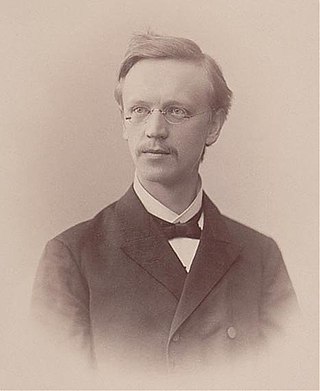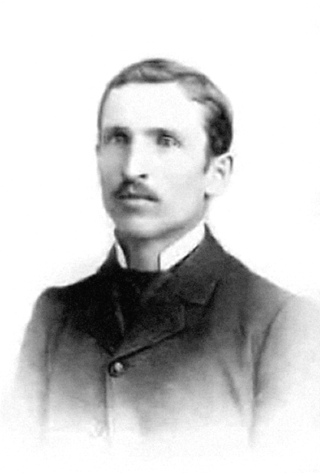
Eugène Bourgeau (1813–1877) was a French naturalist. He was native of Brizon in the département of Haute-Savoie in France.

Ferdinand Albin Pax was a German botanist specializing in spermatophytes. A collaborator of Adolf Engler, he wrote several monographs and described several species of plants and animals from Silesia and the Carpathians. He was a professor at Wrocław University from 1893. His son Ferdinand Albert Pax (1885–1964) was a noted zoologist.

William Gilson Farlow was an American botanist.

Dmitry Ivanovich Litvinov was a Russian botanist responsible for the naming of a large variety of East European and Asian plants. He is known as the author of the concept of glacial refugia for the plants growing on chalk and limestone slopes of the banks of rivers in the European part of Russia. Together with Vasily Zinger, he discovered the natural monument Galichya Gora in Central Russia inhabited by relict plants.

William Ashbrook Kellerman was an American botanist, mycologist and photographer.
Wilhelm G. Solheim I (1898–1978) was a botanist after whom the Wilhelm G. Solheim Mycological Herbarium at the University of Wyoming is named. He issued the exsiccata series Mycoflora Saximontanensis exsiccata (1934–1957), several fascicles (cent.) with George Baker Cummins. His son, Wilhelm G. Solheim II was an archeologist and a senior practitioner of archaeology in Southeast Asia.
Gustav Adolf Hugo Dahlstedt was a Swedish botanist who worked at the Bergianska Trädgården and Naturhistoriska Riksmuseet in Stockholm. In 1907 he received his honorary doctorate.

Joseph Friedrich Nicolaus Bornmüller was a German botanist born in Hildburghausen, Thuringia.

Friedrich Gottlieb Bartling was a German botanist who was a native of Hanover.
Yury Nikolaevitch Voronov was a Russian botanist. He worked at the Botanical Garden in Leningrad.

Thomas Drummond, was a Scottish botanical collector.

Henry Robert Nicollon des Abbayes was a French botanist and lichenologist. He was the chair of the Botanical Department of the University of Rennes and an expert on the flora of Great Britain. The standard author abbreviation Abbayes is used to indicate this person as the author when citing a botanical name.
John Scott Lennox Gilmour VMH FLS was a British botanist, curator of the Cambridge University Herbarium, and later director of Cambridge University Botanic Garden and Fellow of Clare College, Cambridge.
The Southern Appalachian Botanical Society is an American botanical society formed in 1935 at West Virginia University. The focus of the society has gradually changed and now includes the botany of the entire eastern United States, including the taxonomy, biogeography, ecology, physiology, and biochemistry of plants. The society has about 500 members.
Adriano Fiori was an Italian botanist.

John Michael Holzinger was a German-born American bryologist, expert on the bryoflora of Colorado, and third president of the Sullivant Moss Society.

Renato Pampanini (1875-1949) was an Italian botanist and mycologist.
Johann Christian Carl Günther was a German botanist, pharmacist, batologist, and author.

Corneille Antoine Jean Abram Oudemans or Cornelis Antoon Jan Abraham Oudemans was a Dutch botanist and physician who specialized in fungal systematics.

Exsiccata is a work with "published, uniform, numbered set[s] of preserved specimens distributed with printed labels". Typically, exsiccatae are numbered collections of dried herbarium specimens or preserved biological samples published in several duplicate sets with a common theme or title, such as Lichenes Helvetici. Exsiccatae are regarded as scientific contributions of the editor(s) with characteristics from the library world and features from the herbarium world. Exsiccatae works represent a special method of scholarly communication. The text in the printed matters/published booklets is basically a list of labels (schedae) with information on each single numbered exsiccatal unit. Extensions of the concept occur.













